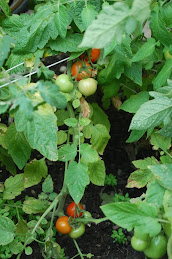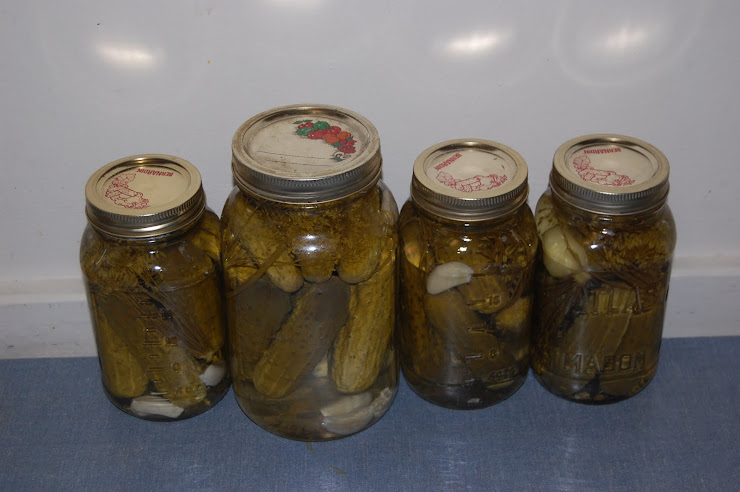I was going to title this post Looking Back, because that what we tend to do as the end draws to a close. We remind ourselves of all of the good things that happened through the year. It's also a good time to acknowledge our mistakes and hopefully learn something from them. It's always good to look back on all of our successes and failures and promise to do better next year. And it's comforting to have this invisible restart, another opportunity to make better choices, or maybe just have better luck!
Typically I do use the last post of the year to catalog the moments, good and bad, that made this year notable but since there was a serious lack of posting this year, I feel like I'll end up explaining way too much, or worse, I won't find anything to write about at all. That certainly seemed to be the case for a lot of this year. I still did all of the things I normally write about; gardening and canning, foraging and beekeeping. But I did come to a bit of a realization in the past year - if I'm being honest, it's a bit of a stretch to call myself a farmer. When I started this blog a few years ago, I was totally caught up in urban agriculture and I had visions of raising food for us to live on year round. I dreamt of chickens in the backyard and hives on the roof, and of mini hoop houses and makeshift greenhouses to extend the growing season. I bought a pressure canner to preserve things that couldn't be pickled or fermented. I ordered cheesemaking kits and sourced raw milk. I've certainly enjoyed learning all of these new skills!
In reality however, it's much harder to maintain a lot of these practices all the time in an urban environment and some of them are still just a dream. I love my new raised beds but there's only so much that will grow in the shade that encrouches more each year. The rooftop gets plenty of sun but I'm limited by the size of the containers -too heavy puts a strain on an aging roof- and lack of water- we don't have an outside tap to hook a hose to so all the water has to be carried up by hand. As for livestock, Toronto is a long way from approving backyard chickens but even if they did, there's not really a safe place to keep them at this apartment. Current bylaws won't allow me to keep beehives either.
Truthfully what I excel at most these days is what I like to call urban foraging. Just like the traditional version of foraging, I make a point of gleaning fruit and other plants from the urban forests. Working with Not Far From the Tree has made me much braver about asking strangers if I can pick from their trees or gardens if they appear to have an overabundance, and there are enough wooded areas within the city limits to do some judicious wild picks on occasion. But to me urban foraging also includes things like taking home the leftovers from events I'm involved with (garbage bags full of leftover freshly shucked corn!) or volunteering for organizations that share the results or 'pay' in kind. Heck, it even includes picking through the discard bins at local greengrocers on occasion- if it's food that would otherwise got to waste, it's still a type of foraging!
So while I may not always be posting regularly, I'm still here and still searching for ways to to live as close to the farm lifestyle as I can get in the big city. And I hope to find more things to write about in the coming year. After all, it's a fresh start tomorrow!
Happy New Year! May 2014 bring you luck, joy and prosperity in all that you do!


































































.jpg)



